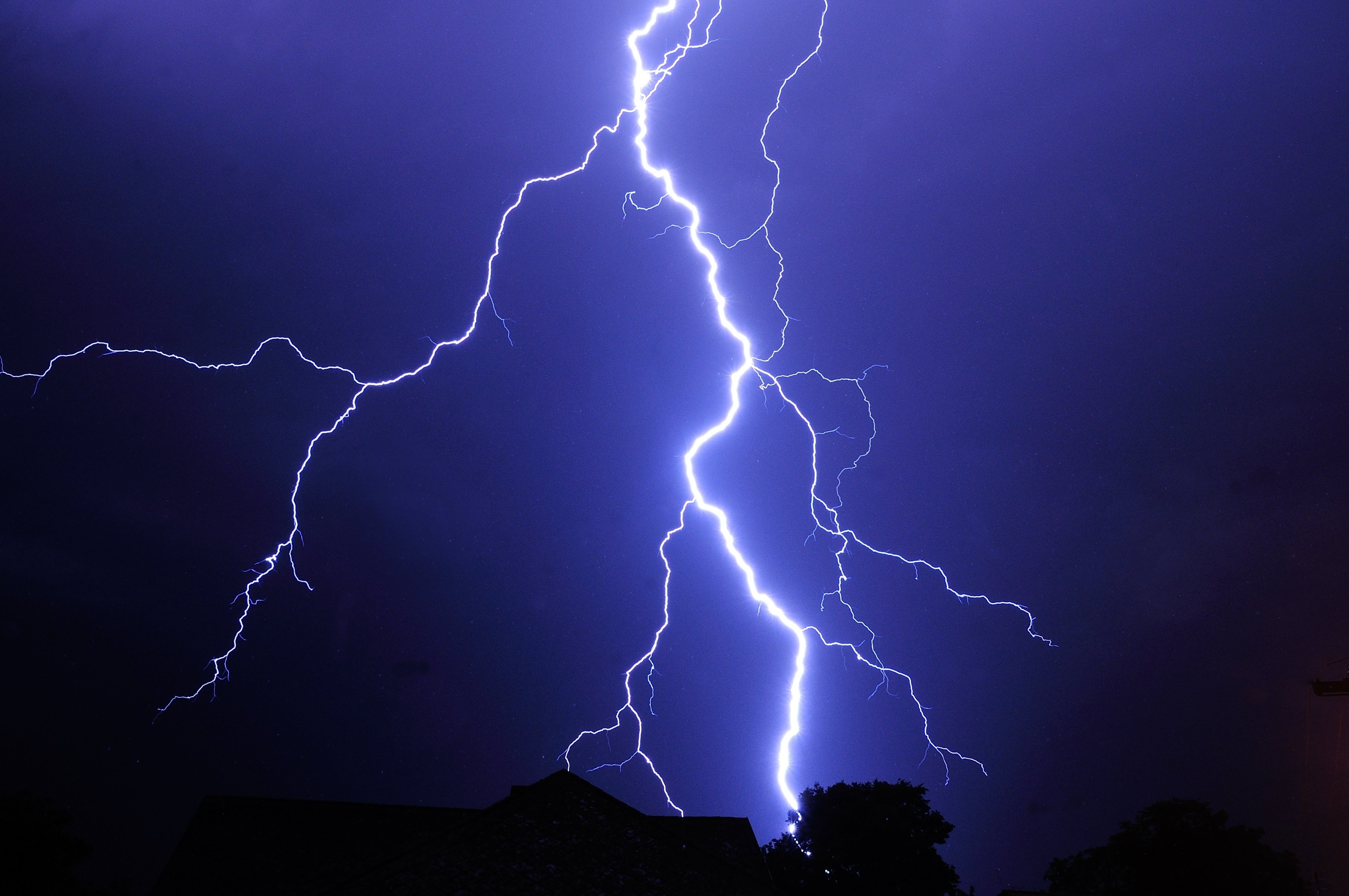Thunderstorms
Thunderstorms:
What are they- Thunderstorms are natural disasters that consist of lightning, thunder, and heavy rainfall that last about 30 minutes.

Characteristics- These storms are about 26,000 to 33,000 feet up in altitude. Most storms last about 30 minutes. The updrafts and downdrafts in the storms are about .3 to 1.6 miles, and travel at a speed of 16 to 33 feet per second. Every gram of condensed water releases about 600 calories of heat, and 80 calories for frozen drops of water. If the storm is multi-celled, then there could be 10 to 100 times more energy.

Location- If the conditions are right, thunderstorms can form anywhere, though, they are less likely to form in northern states where the air is already cold, and are rare to form on the pacific coast during the summer.

Formation- Thunderstorms occur when warm air moves upward, and as it goes up in the atmosphere the air condenses and forms a cumulonimbus cloud. After the water vapor reaches a specific temperature, it turns into water or ice and reduces into pressure of the thunderous cell.

History- It is thought that the first fire known to man waws caused by lightning and taught man how to create fire. Ancient Greeks believed that Zeus used the lightning to claim something as sacred. Recently, scientists discovered that lightening has contributed to the evolution of living organisms.

Prevention-
- Do not use water during a storm, for the electricity can travel thorugh plumbing
- Crouch close to the ground
- Do not lay on the ground
- Do not stay outside
- Avoid leaning on concrete walls
- Be aware
- Stay indoors
Cites-
https://en.wikipedia.org/wiki/Thunderstorm
https://www.britannica.com/science/thunderstorm
https://www.cdc.gov/disasters/lightning/safetytips.html
https://www.weather.gov/safety/lightning-history
Images:
https://www.nytimes.com/2020/02/10/climate/lightning-africa-climate-change.html
https://www.homeadvisor.com/r/severe-thunderstorms-guide/
https://whyfiles.org/2010/what-are-the-different-types-of-thunderstorms/index.html
https://www.britannica.com/science/thunderstorm
https://www.abc.net.au/news/2013-01-15/grass-fire-burns-as-lightning-arcs-across-sky/4465398?nw=0
By using this site you agree to this Privacy Policy. Learn how to clear cookies here
δημιουργία eshop MATCH:::Spal vs Frosinone Saint Sava Faneco: The Serbian Saint Who Protected Children silicone bodysuit- Top Crossdresser Shop Dylans Doors KC Mặt Bằng Caraworld Cam Ranh KTXM Cập Nhật Chi Tiết 2024 Thunderstorms Wordpress and also organizing Best bluetooth speakers with bass